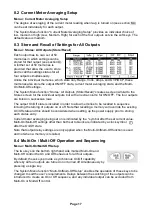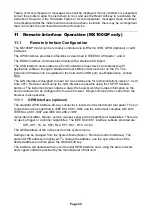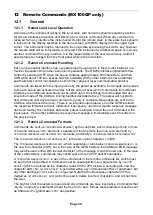
Page 21
10
Notes on Operation
10.1
Accuracy and Resolution
All four outputs provide good accuracy and resolution and offer remote sensing to ensure
precise regulation at the load. See section 14 for accuracy specifications.
Ranges 16V and 35V offer greater resolution and accuracy than 70V range and uses 5-digit
meters to give 1mV and 0.1mA resolution (as against 10mV and 0.1mA for 70V range).
Consequently, ranges 16V and 35V should be chosen to power circuits where particularly high
precision is required.
10.2
Remote Sense
Each output has a very low output impedance, but this is inevitably increased by the resistance
of the connecting leads and the contact resistance between terminals and leads. At high
currents this can result in significant differences between the indicated source voltage and the
actual load voltage (two 20 milliohm connecting leads will drop 0.2V at 5 Amps, for example).
This problem can be minimised by using short, thick, connecting leads, but where necessary it
can be completely overcome by using the remote sense capability.
This requires the sense terminals to be connected to the output at the load instead of at the
source by inserting wires into the SENSE terminals and connecting them directly to the load.
The switch should then be set to REMOTE instead of LOCAL.
To avoid instability and transient response problems, care must be taken to ensure good
coupling between each output and sense lead; this can best be done by twisting the leads
together. An electrolytic capacitor directly across the load connection point may also be
beneficial.
The voltage drop in each output lead should not exceed 0.5 Volts. Higher voltage drops could
result in small metering errors or an inability to supply full power to the load when approaching
maximum voltage and current.
10.3
Parallel Wiring of Outputs
If currents above 6 amps are required, this can be achieved by wiring two or more outputs in
parallel. For example, outputs 1 and 2 could be paralleled to provide 16V/12A. In this situation it
would be appropriate to use voltage tracking (Mode1 V2=V1 in this example) so that the voltage
can be adjusted directly on one output. See section 8.1 .
The drawing shows a parallel connection of two outputs using local or remote sensing.
















































